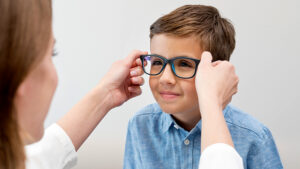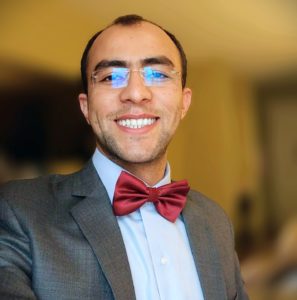December 1, 2023
By Hashim Ali Khan, OD, FAAO, AAO-Diplomate, PhD Candidate at Brien Holden Vision Institute

Science Photo Library, Getty Images
Myopia progression is associated with an increased risk of complications. While the progression of myopia in various age groups is well documented, much is yet to be learned about the natural course of myopia after its onset. This DREAM study by Polling, et al. described the natural course of myopia from its onset to adulthood. Their study included records from 2,555 individuals, and age at first spectacle prescription served as a surrogate for the age of myopia onset.
They found that myopia progressed through childhood, slowed down with age, and stabilized around 21 years of age. The median progression of -0.50D/year at 10 years of age gradually decreased to -0.08D/year at 19–21 years of age. Furthermore, until age 12, the median progression was -0.25D/year, whereas after 16 years, only those in the 90th to 95th percentile progressed by -0.25D/year or more, indicating a decrease in myopia progression with age.
Greater progression and more myopic final refraction at adult age were associated with the first prescription for glasses before age 10. Also, the SER before the age of 10 was a strong indicator of developing high myopia, as all individuals with SER -3.00D or more developed high myopia by 25 years of age.
There are some important clinical implications to these results. After the age of 21, myopia does not generally progress at clinically relevant rates except for those with high baseline SER (<-3.00D) and so have a greater risk of complications. A stronger prescription within the first ten years of life means more frequent clinical follow-ups and rigorous, aggressive myopia management.
Abstract
Myopia Progression From Wearing First Glasses to Adult Age: The DREAM Study
Jan Roelof Polling, Caroline Klaver, Jan Willem Tideman
Purpose: Data on myopia progression during its entire course are scarce. The aim of this study is to investigate myopia progression in Europeans as a function of age and degree of myopia from first prescription to final refractive error.
Methods: The Drentse Refractive Error and Myopia Study assessed data from a branch of opticians in the Netherlands from 1985 onwards in a retrospective study. First pair of glasses prescribed was defined as a spherical equivalent of refraction (SER) ≤−0.5 D to ≥−3.0 D. Subjects with prescriptions at an interval of at least 1 year were included in the analysis.
Results: A total of 2555 persons (57.3% female) met the inclusion criteria. Those with first prescription before the age of 10 years showed the strongest progression (−0.50 D; IQR: −0.75 to −0.19) and a significantly (p<0.001) more negative median final SER (−4.48 D; IQR: −5.37 to −3.42). All children who developed SER ≤−3 D at 10 years were highly myopic (SER ≤−6D) as adults, children who had SER between −1.5 D and −3 D at 10 years had 46.0% risk of high myopia, and children with SER between −0.5 D and −1.5 D had 32.6% risk of high myopia. Myopia progression diminished with age; all refractive categories stabilised after age 15 years except for SER ≤−5 D who progressed up to −0.25 D annually until age 21 years.
Conclusion: Our trajectories of the natural course of myopia progression may serve as a guide for myopia management in European children. SER at 10 years is an important prognostic indicator and will help determine treatment intensity.
Polling, J. R., Klaver, C., & Tideman, J. W. (2022). Myopia progression from wearing first glasses to adult age: the DREAM Study. British Journal of Ophthalmology, 106(6), 820-824.
DOI: http://dx.doi.org/10.1136/bjophthalmol-2020-316234
 |
Hashim Ali Khan is a current PhD student working on Adult Myopia with Prof. Padmaja Sankaridurg, Dr. Nina Tahhan, and A/Prof. Thomas Naduvilath, at the Brien Holden Vision Institute, University of New South Wales, Sydney. |













